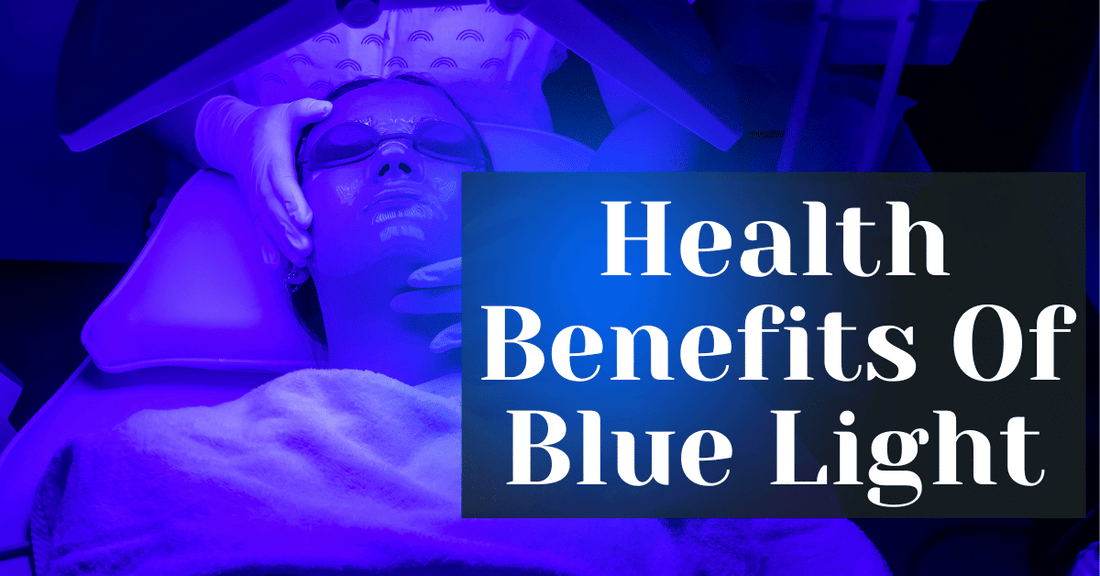
Health Benefits Of Blue Light
Blue light is a part of the visible light spectrum that can have a profound impact on our health and well-being. It is a high-energy, short-wavelength, non visible light, that is present in natural sunlight and emitted by artificial sources such as LED lighting, computer screens, smartphones, and other digital devices. The growing prevalence of these electronic devices and other digital devices in our daily lives has led to increased exposure to blue light, making it a topic of interest and concern for many.
Understanding the impact of blue light on health is crucial. While it has several beneficial effects, such as boosting alertness and improving mood, excessive or inappropriate amount reduce blue light exposure and can disrupt our sleep patterns and potentially harm our eyes. As we continue to integrate technology into our lives, it's important to recognize how blue light affects us and learn how to manage our exposure to maintain our health and well-being.
Understanding Blue Light
What is Blue Light?

Blue light is a segment of the visible light spectrum characterized by its short wavelength and high energy. It falls in the range longer wavelengths of 380 to 500 nanometers and is one of the brightest and most energetic forms of visible light spectrum of electromagnetic spectrum of light visible to the human eye. Due to its unique properties, blue light plays a significant role in how we perceive color, infrared light, helping us see the world in vibrant hues.
Sources of Blue Light (Natural and Artificial)
Natural Sources:

The primary natural source of blue light is the sun. Sunlight is a spectrum of various colors, and blue light is a significant component of this natural illumination.
Artificial Sources:

In the modern world, we are surrounded by artificial sources of blue light. These include:
-
LED lighting: Energy-efficient LED bulbs emit a considerable amount of blue light.
-
Digital Screens: Computers, smartphones, tablets, and televisions are significant sources of blue light exposure, especially as we spend increasing amounts of time using these devices.
-
Fluorescent lighting: Common in offices and commercial spaces, fluorescent lights also emit blue light.
The Science Behind Blue Light and Its Interaction with the Body
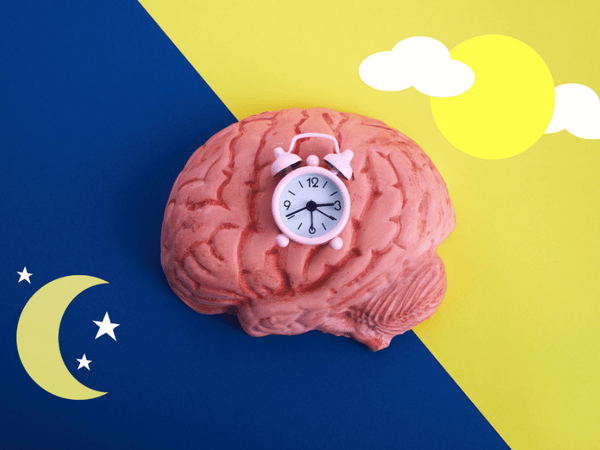
-
Circadian Rhythm: Blue light plays a crucial role in regulating our circadian rhythm, which is our body's natural sleep-wake cycle. Exposure to blue light during the day helps maintain our alertness and keeps us awake. However, exposure to blue light at night can disrupt this cycle, leading to sleep disturbances.
-
Melatonin Production: The body's production of the sleep hormone melatonin is influenced by blue light. Exposure to blue light at night can suppress melatonin secretion, making it harder to fall asleep.
-
Eye Health: Due to its high energy, blue light can penetrate deeper into the eye than other types of light. While there is ongoing research, there are concerns that prolonged exposure to blue light could lead to digital eye strain and potentially contribute to long-term damage, such as an increased risk of macular degeneration.
Health Benefits of Blue Light
Enhancing Alertness and Cognitive Function

Blue and white light together has been shown to boost alertness and enhance cognitive performance, particularly during tasks that require attention to detail. Exposure to a source of blue light and red light alone, especially during the same daytime hours, can help maintain focus and improve reaction times, making it beneficial for productivity and overall mental sharpness.
Regulating Circadian Rhythm and Improving Sleep Quality
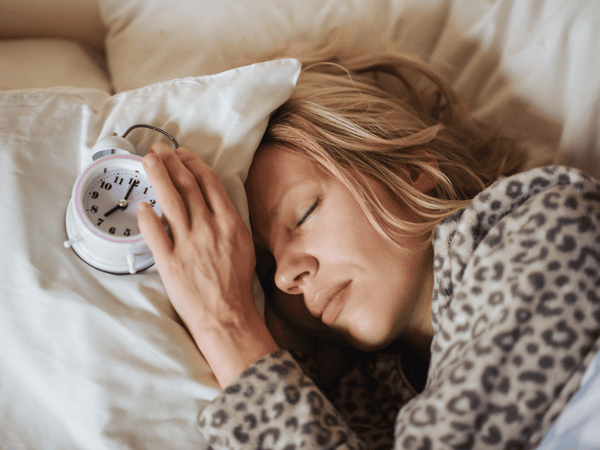
While excessive exposure to blue light intensity emitted by at night can disrupt sleep, appropriate exposure to blue light intensity emitted by during the day can have positive effects on our circadian rhythm. Natural blue light from the sun helps signal to our body that it's daytime, promoting wakefulness and alertness. This daytime exposure to red light is essential for maintaining a healthy sleep-wake cycle, which in turn can lead to improved sleep quality and overall well-being.
Potential Role in Treating Seasonal Affective Disorder (SAD)
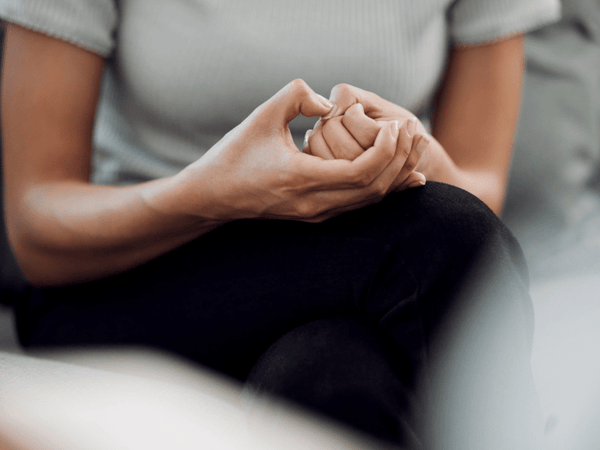
Seasonal Affective Disorder (SAD) is a type of depression that occurs at certain times of the year, typically in the fall and winter when natural sunlight is limited. Blue light therapy, which through exposed to blue, light waves that during screen time simulates the natural ultraviolet light from of the sun, has been used as a treatment option for SAD. Exposure to blue light can help regulate mood and reduce symptoms of depression associated with the disorder.
Blue Light Therapy for Skin Conditions
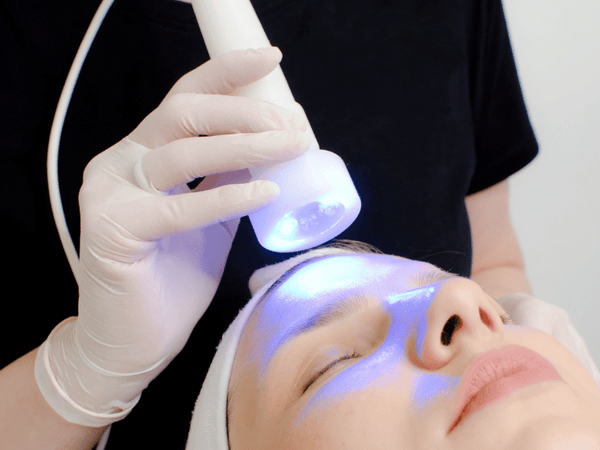
Blue light therapy is also utilized in dermatology to treat various skin conditions. For example:
-
Acne: Blue light can target the bacteria that cause acne, reducing inflammation and preventing breakouts.
-
Psoriasis: In some cases, blue light therapy can help reduce the symptoms of psoriasis by slowing down the production of skin cells.
-
Eczema: While more research is needed, there is potential for blue light therapy to help manage eczema by reducing itchiness and inflammation.
Blue Light and Eye Health
Positive Effects of Blue Light on Vision

-
Clarity and Contrast: Blue light is essential for maintaining good vision. It helps to increase contrast and sharpness, enabling us to see details more clearly.
-
Color Perception: Blue light is crucial for color perception. It allows us to distinguish between different shades of color, especially blues and greens.
Tips for Safely Exposing Eyes to Blue Light
-
Use Blue Light Filters: Many digital devices come with built-in blue light filters or settings that reduce blue light emission. Activating these features, especially in the evening, can help minimize blue light exposure.
-
The 20-20-20 Rule: To lessen eye strain, take a break every 20 minutes to look at something 20 feet away for at least 20 seconds. This simple practice can help alleviate the effects of prolonged screen time.
-
Adjust Screen Settings: Lower the brightness of your screens and adjust the color temperature to warmer tones, which reduce blue light output.
-
Wear Blue Light Blocking Glasses: Consider wearing glasses with lenses that block or filter blue light. These can be particularly helpful if you spend long hours in front of screens.
-
Limit Screen Time Before Bed: Reduce exposure to blue light from screens at least an hour before bedtime to help maintain your natural sleep cycle.
Debunking Myths About Blue Light and Eye Damage
-
Myth: Blue Light Causes Permanent Eye Damage: While excessive exposure to blue light can lead to digital eye strain, there is currently no conclusive evidence to suggest that it causes permanent damage to the eyes.
-
Myth: All Blue Light Is Harmful: Not all blue light is bad. In fact, natural blue light from the sun is essential for regulating our sleep-wake cycle and maintaining overall well-being.
-
Myth: Blue Light Glasses Are a Must for Everyone: While blue light glasses can help reduce eye strain, they are not a necessity for everyone. It's essential to assess your screen time and exposure to decide if they are right for you.
Blue Light in Medical Treatments
Overview of Blue Light Therapy in Medical Practice
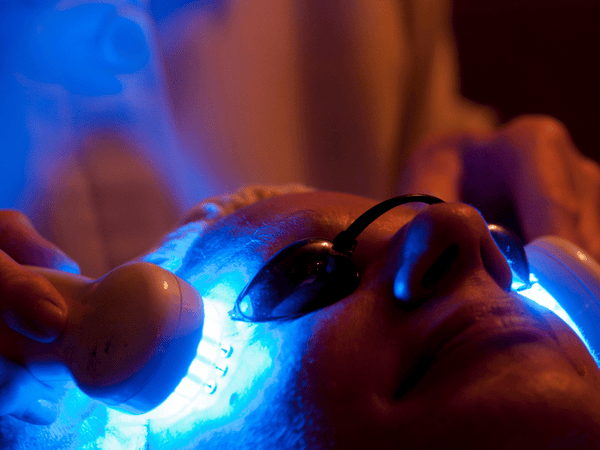
Blue light therapy, also known as photodynamic therapy, is a non-invasive treatment that uses specific wavelengths of the more blue light and visible light, to target and treat various medical conditions. It leverages the unique properties of the blue wavelength and visible light spectrum of light to induce beneficial biological effects, such as killing bacteria, reducing inflammation, and stimulating healing processes.
Applications in Dermatology
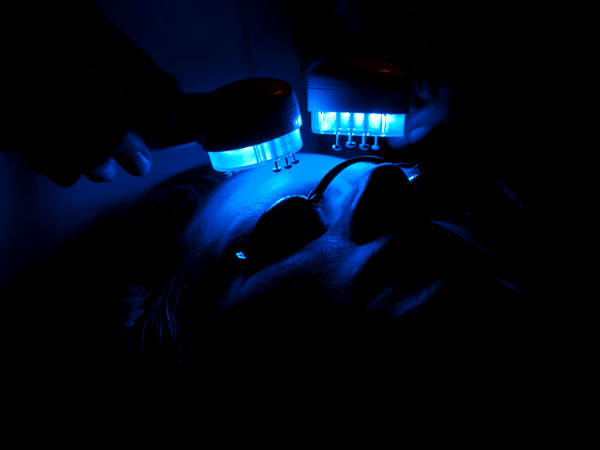
-
Acne Management: Blue light therapy is commonly used to manage acne. The light penetrates the skin's surface and destroys acne-causing bacteria, reducing inflammation and preventing future breakouts.
-
Psoriasis: Blue light can help manage psoriasis by slowing down the rapid growth of skin cells and reducing inflammation.
-
Eczema: Blue light therapy may also be beneficial for eczema, as it can alleviate itching and inflammation associated with the condition.
Applications in Mental Health

-
Seasonal Affective Disorder (SAD): Exposure to blue light is an effective treatment for SAD, a type of depression that occurs during the darker months of the year. Blue light mimics natural sunlight, helping to regulate mood and improve symptoms.
-
Sleep Disorders: By balancing the body's circadian cycle and enhancing sleep patterns, blue light treatment can be used to treat specific sleep problems.
Emerging Research on Blue Light's Therapeutic Potential
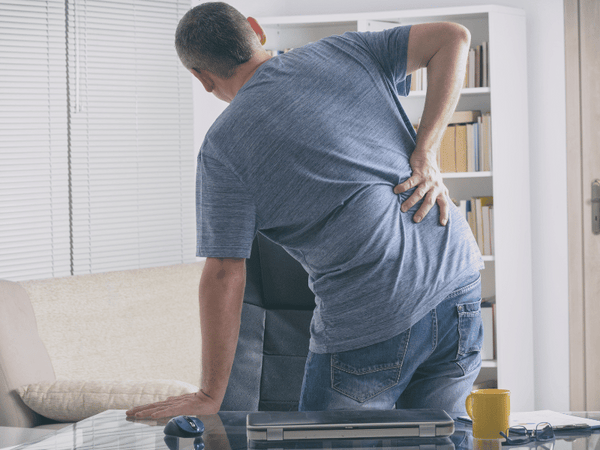
-
Wound Healing: Recent studies suggest that blue light therapy may accelerate wound healing by reducing inflammation and promoting tissue repair.
-
Pain Management: Preliminary research indicates that blue light can have an analgesic effect, potentially providing relief for certain types of chronic pain.
-
Antimicrobial Properties: Blue light is being explored for its ability to kill bacteria and other pathogens, offering a potential alternative to traditional antibiotics.
Optimizing Exposure to Blue Light (Sunlight)
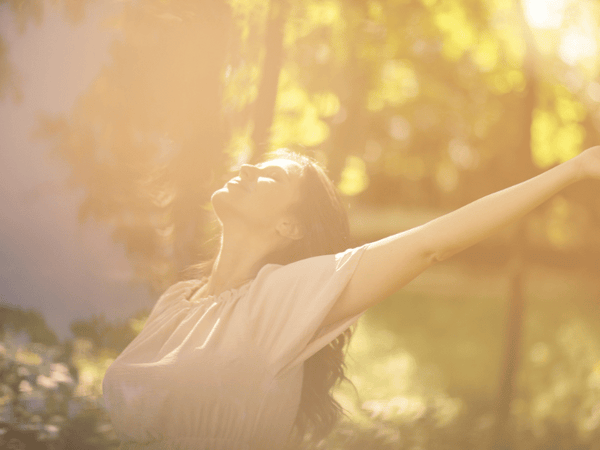
Guidelines for Healthy Exposure to Blue Light
-
Daytime Exposure: Aim to get natural blue light exposure during the day by spending time outdoors in natural sunlight. This can help regulate your circadian rhythm and boost mood and alertness.
-
Limit Nighttime Exposure: Reduce exposure to artificial blue light sources, especially in the evening and before bedtime, to avoid disrupting your sleep cycle.
-
Balance Screen Time: Be mindful of the time spent in front of screens. Take regular breaks and practice good screen hygiene to minimize eye strain and excessive blue light exposure.
Using Blue Light Filters and Protective Eyewear
-
Blue Light Filters: Many digital devices offer built-in blue light filters or night mode settings that reduce blue light emission. Enabling these features, especially in the evening, can help minimize exposure.
-
Protective Eyewear: Consider wearing glasses with lenses that block or filter blue light. These glasses are available in prescription and non-prescription options and can be particularly beneficial for individuals who spend long hours in front of screens.
Best Practices for Balancing Blue Light Exposure
-
Follow the 20-20-20 Rule: Take a 20-second break every 20 minutes to look at anything 20 feet away. This technique offers a little break from blue light and lessens eye strain.
-
Adjust Screen Settings: Lower the brightness of your screens and adjust the color temperature to warmer tones in the evening to reduce blue light output.
-
Create a Tech-Free Zone: Designate a tech-free zone or time, especially before bed, to help your body wind down and prepare for sleep without the influence of blue light.
-
Use Ambient Lighting: In the evening, use ambient lighting with warmer tones and avoid bright, overhead lights to create a more sleep-friendly environment.
Blue Light in Daily Life

The Role of Blue Light in Work and Productivity
-
Alertness and Focus: Exposure to blue light during the day can enhance alertness and improve focus, making it easier to concentrate on work tasks.
-
Performance: Studies have shown that blue light can positively affect cognitive performance, including memory and reaction time, which is beneficial in work settings.
Blue Light's Impact on Mood and Energy Levels
-
Mood Enhancement: Exposure to natural blue light, especially in the morning, has been linked to improved mood and a greater sense of well-being.
-
Energy Boost: Blue light can increase energy levels, making individuals feel more awake and invigorated, which is particularly useful for combating the midday slump.
Tips for Managing Blue Light Exposure from Screens and Devices
-
Use Blue Light Filters: Most digital devices have settings or apps that reduce blue light emission. Enabling these features, especially in the evening, can help minimize exposure.
-
Take Regular Breaks: Follow the 20-20-20 rule to give your eyes a break from screens and reduce the risk of digital eye strain.
-
Adjust Screen Settings: Lower the brightness of your screens and opt for warmer color temperatures to reduce blue light output.
-
Create an Ergonomic Workspace: Position your screen at eye level and at an appropriate distance to reduce glare and strain on your eyes.
-
Limit Screen Time Before Bed: To avoid disrupting your sleep cycle, try to reduce screen time at least an hour before bedtime.
Frequently Asked Questions About Blue Light

Is all blue light bad?
No, not all blue light is harmful. Natural blue light from the sun is beneficial for regulating our sleep-wake cycle and maintaining overall well-being. It's only blue light from the excessive exposure to artificial blue light, especially at night, that can be problematic.
Can blue light cause permanent eye damage?
Current research does not conclusively prove that blue light from screens and electronic devices causes permanent eye damage. However, it can lead to digital eye strain and disrupt sleep patterns in human eyes.
Do I need blue light blocking glasses?
Whether you need blue light blocking glasses depends on your level of exposure to violet light, very bright light, white light, and sensitivity to violet light. They can be helpful for reducing eye strain and improving sleep quality if you spend a lot of time in front of screens.
How to Measure Personal Blue Light Exposure
-
Use Apps and Tools: There are various apps and tools available that can monitor your screen time and the amount of blue light emitted by your devices. Some can even provide recommendations for reducing exposure.
-
Self-Assessment: Keep track of the time you spend on digital devices, especially in the evening. Consider how your screen time may be affecting your sleep and overall health.
Recommendations for Individuals Sensitive to Blue Light
-
Limit Screen Time: Try to reduce the amount of time spent in front of screens, particularly before bedtime.
-
Adjust Device Settings: Use blue light filters and adjust the color temperature of your screens to warmer tones.
-
Create a Nighttime Routine: Establish a relaxing bedtime routine that minimizes exposure to blue light, such as reading a book or taking a bath.
-
Seek Professional Advice: If you experience significant discomfort or sleep disturbances, consult with a healthcare professional for personalized recommendations.
Conclusion
In conclusion, blue light plays a significant role in our health and well-being. While it is often criticized for its potential negative effects, it's important to remember that blue light also offers numerous health benefits. From enhancing alertness, memory and cognitive function to regulating our circadian rhythm and improving mood, blue light can be a powerful ally when used wisely.
However, it's crucial to strike a balance between blue light protection too excessive screen time exposure. Excessive or poorly timed screen exposure due to blue light, especially from artificial sources, can disrupt our sleep patterns and contribute to digital eye strain. By adopting practices for balanced blue light exposure, such as using blue light filters on computer glasses, taking regular breaks from screens, and limiting screen time before bed, we can harness the advantages of blue light while mitigating its risks.
We encourage you to be mindful of your blue light exposure and take proactive steps to protect your health. Whether it's less blue wavelength light through adjusting your screen settings, incorporating more blue light- blocking glasses wear sunglasses, or simply getting more natural sunlight during the day, there are many ways to get blue light damages achieve a healthier balance. By doing so, you can enjoy the benefits of blue light while safeguarding your overall well-being.
Additional Resources
For those looking to delve deeper into the topic of blue light and its effects on health, or seeking tools to manage their exposure block blue light, the following resources can be valuable:
Links to Reputable Sources for Further Reading:
1. Harvard Health Publishing - Blue Light Has a Dark Side https://www.health.harvard.edu/staying-healthy/blue-light-has-a-dark-side
2. National Sleep Foundation - How Blue Light Affects Sleep https://www.sleepfoundation.org/bedroom-environment/blue-light
3. American Academy of Ophthalmology - Blue Light and Your Eyes https://www.aao.org/eye-health/tips-prevention/blue-light-digital-eye-strain
Apps and Tools for Managing Blue Light Exposure:
1. f.lux: A software that adjusts the color temperature of visible blue light passes waves your computer screen according to the time of day, reducing blue light intensity and the blue light screen time during the orange light exposure in the evening. https://justgetflux.com/
2. Twilight: An app for Android devices that filters the flux of blue and white light emitted by screen display on your phone or tablet after sunset to protect your eyes. https://play.google.com/store/apps/details?id=com.urbandroid.lux
3. Night Shift: A feature built into iOS devices that automatically adjusts the colors of your display to the warmer end of electromagnetic spectrum of the visible light spectrum after dark.
Professional Advice for Those with Specific Health Concerns Related to Blue Light:
-
If you have specific health concerns related to blue light exposure, such as sleep disturbances or eye strain, it is advisable to consult with a healthcare professional. They can provide personalized recommendations and guidance based on your individual needs and circumstances.
-
For eye-related issues, an optometrist or ophthalmologist can offer advice on protecting your eyes from blue light and suggest appropriate eyewear if needed.